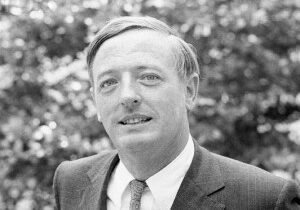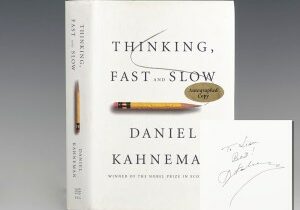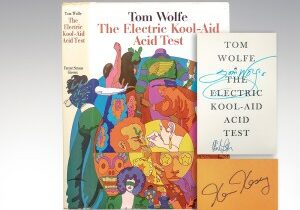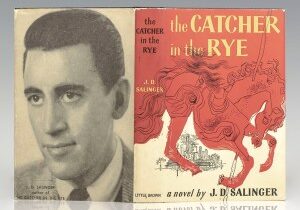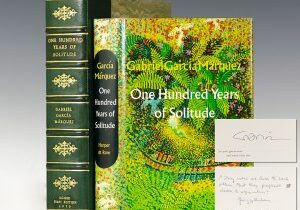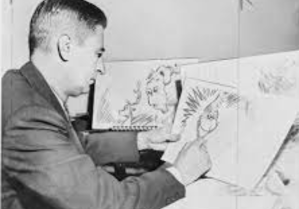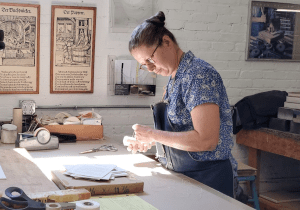
American entrepreneur, animator, and film producer Walt Disney is arguably the most important figure in the history of animation. A national cultural icon, his innovative spirit and vision revolutionized the genre of animated cartoons, making them a major part of mainstream popular entertainment. Born in Chicago’s Hermosa neighborhood, Disney began his animation career in 1919 as an apprentice artist at the Pesmen-Rubin Commercial Art Studio where he worked for a year before starting his own business, Iwerks-Disney Commercial Artists, with fellow animator Ub Iwerks.

Rare first edition Little Golden Book of Walt Disney’s Mickey Mouse and Pluto Pup; inscribed by Walt Disney
In 1923, Disney and Iwerks moved to California and founded Disney Brothers Cartoon Studio which was later incorporated as Walt Disney Productions in 1929. The studio came to be recognized as the premier American animation studio and developed many of the techniques, concepts and principles that became standard practices of traditional animation. Disney and Iwerks made their big break with the development of the animated character Mickey Mouse who first appeared in the 1928 short film Steamboat Willie. Disney soon signed a contract with Columbia Pictures to distribute the Mickey Mouse cartoons, which became increasingly popular, both nationally internationally, and introduced some of the most recognizable animated characters still popular today including Minnie Mouse, Donald Duck, and Pluto Pup.
By 1934, Disney had become dissatisfied with producing formulaic cartoon shorts, and believed a feature-length cartoon would be more profitable. The studio began the four-year production of Snow White and the Seven Dwarfs, based on the fairy tale. The film, which was the first animated feature made in full color and sound, cost $1.5 million to produce and became the most successful motion picture of 1938 and by May 1939 its total gross of $6.5 million made it the most successful sound film made to that date.

First edition of Walt Disney’s Fantasia; inscribed by Walt Disney and twelve Walt Disney Studios animators
With work on Snow White finished, the studio began producing Pinocchio in early 1938 and Fantasia in November of the same year. Consisting of eight animated segments set to pieces of classical music conducted by Leopold Stokowski, Fantasia was unable to make a profit due to World War II, which cut off distribution to the European market. It was subsequently reissued multiple times and has now become the 23rd highest-grossing film of all time in the U.S. Disney said of the animated orchestral masterpiece, “Fantasia is timeless. It may run ten, twenty, thirty years… Fantasia is an idea in itself. I can never build another.”

First edition of The Big Golden Book retelling of one of the most celebrated Disney films: Walt Disney’s Cinderella
In early 1950, Disney produced Cinderella, his studio’s first animated feature in eight years. It was popular with critics and theater audiences. Costing $2.2 million to produce, it earned nearly $8 million in its first year. Five years later, the 15th animated musical romance film, Lady and the Tramp, was released and became another box office success. Based on the story by Ward Greene, it was the first animated feature filmed in the CinemaScope widescreen film process and featured the voices of Barbara Luddy, Larry Roberts, Bill Thompson, Bill Baucom, Verna Felton, and Peggy Lee.
Disney would go on to receive 59 Academy Award nominations, three Golden Globe nominations, and win two two Special Achievement Awards—for Bambi (1942) and The Living Desert (1953)—and the Cecil B. DeMille Award. He also received four Emmy Award nominations, winning once, for Best Producer for the Disneyland television series. Browse the many works by Walt Disney currently in our collection as well as the many books that inspired him including Alice in Wonderland, Mary Poppins, and The Jungle Book.



